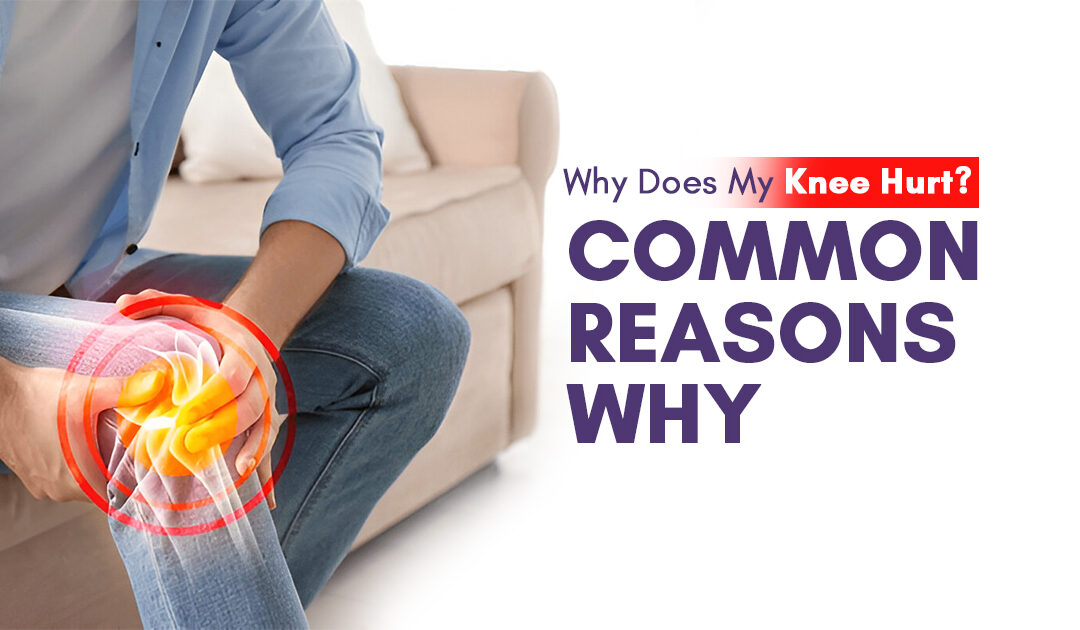Picture this: You’ve woken up and are about to get out of bed when a sharp pain shoots through your knee, agonizing you. Sounds familiar?
Knee pain remains a common complaint among adults and senior citizens. Most often associated with the usual wear and tear from routine activities such as walking, bending, standing, and lifting, knee pain can also be caused by aging or injury. In some circumstances, it can become a nuisance if not taken care of.
Let us understand the brief anatomy of the knee. It is a vulnerable joint as it bears a lot of stress from daily high-impact activities like lifting, kneeling, jogging, and more. The knee is constituted of three parts, namely the tibia, femur, and patella. The tibia is the shin or large bone of the lower leg. The femur is the thighbone or upper legbone. The patella is the kneecap. A layer of cartilage covers each bone end, assisting in absorbing shock and protecting the knee. To be precise, the knee could be described as two long leg bones held together by muscles, ligaments, and tendons.
The tough cords of tissue connecting muscle to bones are tendons. The elastic bands of tissue connecting bones to bones are ligaments. While some ligaments on the knee give stability and protection to the joints, others manage the forward and backward movement of the tibia or the shin bone.
Common Knee Problems:
Knee issues consist of the aging process, continual wear, and stress on the knee joint (like arthritis). Other issues may include injury or sudden movements straining the knee. The five common knee problems are:
- Torn cartilage: Menisci are the pads of the connective tissue acting as shock absorbers while enhancing stability. They can be torn by trauma to the knee. Sprains, on the other hand, can often occur with cartilage tears. Treating it would require wearing a brace during activity to protect the knee from further injury. If needed, surgery is also advised.
- Tendonitis: Your inflamed tendons could be caused by the overexertion of the tendons during certain high-impact activities such as running, jumping, or cycling. Jumper’s knee is the tendonitis of the patellar tendons, occurring in sports such as basketball where the force of hitting the ground after a jump strains the tendon.
- Arthritis: Osteoarthritis is a degenerative process and is the most common type of arthritis affecting the knee. It occurs when the cartilage in the joint gradually wears away. Often affecting people of middle age and older, it may also be caused by excess strain on joints due to repeated injury or obesity. Rheumatoid arthritis affects the knees by inflaming the joints and destroying the knee cartilage. Rheumatoid arthritis often affects people at an earlier age than osteoarthritis.
- Sprained or strained knee ligaments: Caused by a blow to the knee or a sudden twist of the knee, they can have symptoms such as pain, swelling, and difficulty walking.
Diagnosis of Knee Problems:
The knee problems are usually diagnosed with a complete medical history and physical exam. In addition to that, your healthcare provider may ask for an X-ray, Magnetic Resonance Imaging (MRI), Computed Tomography Scan (CT scan or CAT scan), Arthroscopy, and Radionuclide Bone Scan.
Treatment of Knee Problems:
In case initial medicine is not providing relief and X-rays show destruction of the joint, your orthopaedist may recommend a total joint replacement for the knee, known as knee replacement. Depending on the type and severity of your condition, both nonoperative and surgical treatment options are available to treat knee pain.
Knee pain could be difficult to tackle; contact your healthcare provider today to get relief from that burdensome pain.
